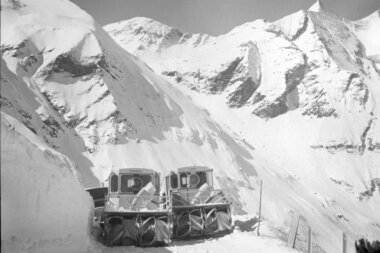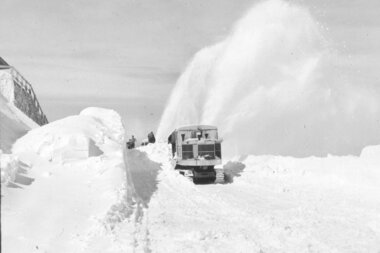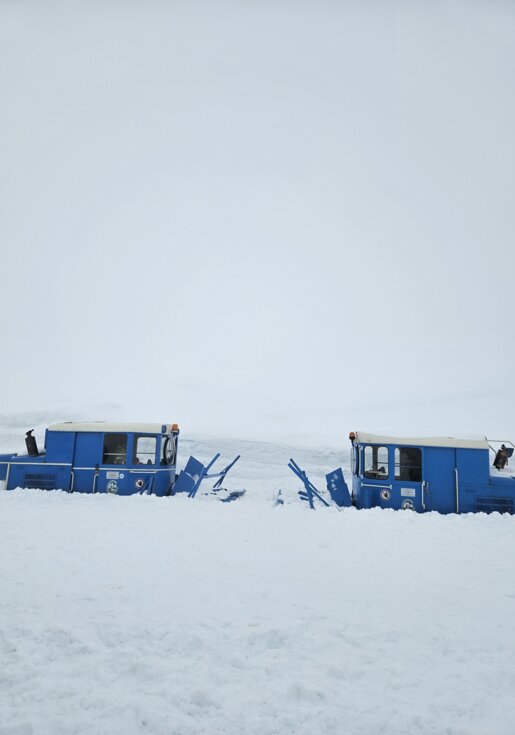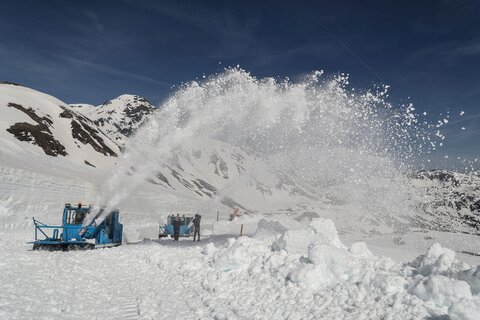Wallack rotation snow ploughs in use since 1953
For almost half of the year the Grossglockner High Alpine Road is covered by snow – and is therefore not driveable and closed to traffic. Often the wind and avalanches create snow levels of up to 20 metres! The annual aim for GROHAG, the company that manages the Grossglockner High Alpine Road, is to remove snow masses from the road at the end of April/start of May. Thus, you get to enjoy the unique experience of driving towards the Grossglockner surrounded by walls of snow that are metres high. Since the opening of this mountain road in August 1935 clearing the high levels of snow has presented an immense challenge.
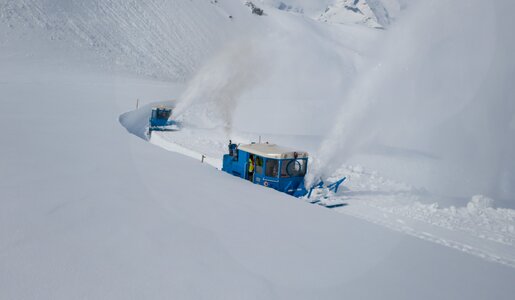
Would you like to be there ‘live’ during snow clearance operations on the Grossglockner High Alpine Road? You can! Just watch the video on YouTube and experience the battle against the snow and ice from the comfort of your couch!
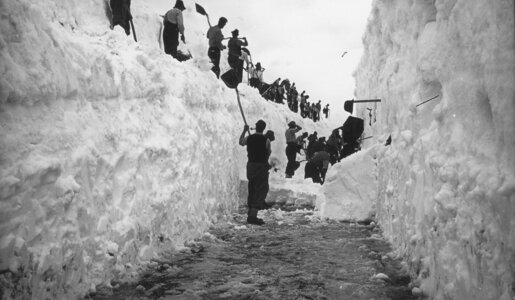
In the winters of 1936 and 1937 – that is, in the first two years after the opening of the high Alpine road – around 350 men, equipped with nothing more than shovels and ice picks, battled against walls of snow up to 20 metres high. Calluses on their hands were the least of the worries these men had to face. Much worse were snow blindness and considerable sunburn, and insufficient means to tackle them. Add to this the fact that frequent outbreaks of bad weather, strong winds, and snowdrifts towering at up ten metres which were not uncommon, undoing the weeks of work over night. At that time, 350 men were needed for around 70 days to manually clear the snow and ice masses from the Grossglockner High Alpine Road!
Franz Wallack: creator the legendary rotation ploughs
Even early on Franz Wallack – planner and constructor of the Grossglockner High Alpine Road, and marketing genius – recognised the opportunity of starting the season on the Grossglockner High Alpine Road a few weeks earlier using a mechanised snow clearance method. Although at the time there were no machines on the market that were able to cope with extreme gradients and slopes, narrow twists and turns and enormous snow masses. So Wallack soon constructed a combination of a snow cutter and snow plough himself – the rotation plough, ‘System Wallack’, which were put to the icy test in the winter of 1953. From this point on, the road was able to be cleared in an average of 25 days, until the end of April.
| The Wallack snow ploughs - figures, details & facts |
|---|
| Full name | Rotation plough System Wallack |
| Constructor | Franz Wallack |
| Age | more than 60 years old |
| Clearance speed |
|
| Clearance width | 2.40 m |
| Spread range | Up to 50 m |
| Spread height | Up to 25 m |
| Weight | approx. 15 tonnes |
| Climbing performance | Up to 60 % |
| Clearing record | In 1975, 800,000 cubic metres of snow (!) – the equivalent of a freight train filled to the top with snow extending from Vienna to Salzburg |
| Start of snow clearance | Mid-April |
| Duration of snow clearance | 12 to 15 days |
Jörgen, Oskar, Ander & Eisbändiger: 4 ploughs, 14 days
These days it is mostly mid-April, when down in the valley the first flowers have long been stretching their delicate leaves towards the warming spring sunshine, that Jörgen, Oskar, Ander and Eisbändiger – GROHAG’s four famous Wallack rotation ploughs – get to work from the north, from Fusch/Ferleiten and from the south, from Heiligenblut, to start clearing Austria’s loveliest panoramic road. Two clearance teams, each comprising seven men, work simultaneously from the north and the south. And to date there is no better equipment for clearing snow on the Grossglockner than these ploughs, which have been performing their duties since the 1950s.
Highlight - the 'Durchstich'
The meeting of the clearance squads at the HochtorThe annual highlight of the snow clearance work on the Grossglockner High Alpine Road is without any doubt the breakthrough ('Durchstich') at the Hochtor, when GROHAG’s clearance squads from the Salzburg and Carinthian sides meet towards the end of April. Specific feature since 2022 - for the first time the historic Wallack snow ploughs were operated by the latest generation, modern, synthetic fuel instead of the customary diesel. With that, rotation ploughs now create significantly fewer local emissions – including nitrogen oxide – and the emission of particulate matter is considerably reduced too.
Rotation snow ploughs: always ready – even in the summer!
Don’t be surprised if you see Wallack rotation ploughs along the route in the summer too! After all, at the altitude locations into which the route of the Grossglockner High Alpine Road proceeds, snow occasionally falls in the summer too. And the ploughs are waiting patiently along the route to get to work. These big blue machines with their crawler chains and impressive milling wheels are not just a popular photo opportunity for visitors who have an interest in technology …
After 9755 deployment hours, Paul is retiring
Did you know that there were originally five Wallack rotation ploughs in operation? Although Paul (construction year 1953) has since been taken out of service. He was deployed until 2010, with exactly 9755 deployment hours. Now this fifteen-tonne device is enjoying a well-deserved break as a long-term loan from GROHAG to Salzburg open-air museum in Großgmain, at the re-designed, historic Guttal Tollhouse.



